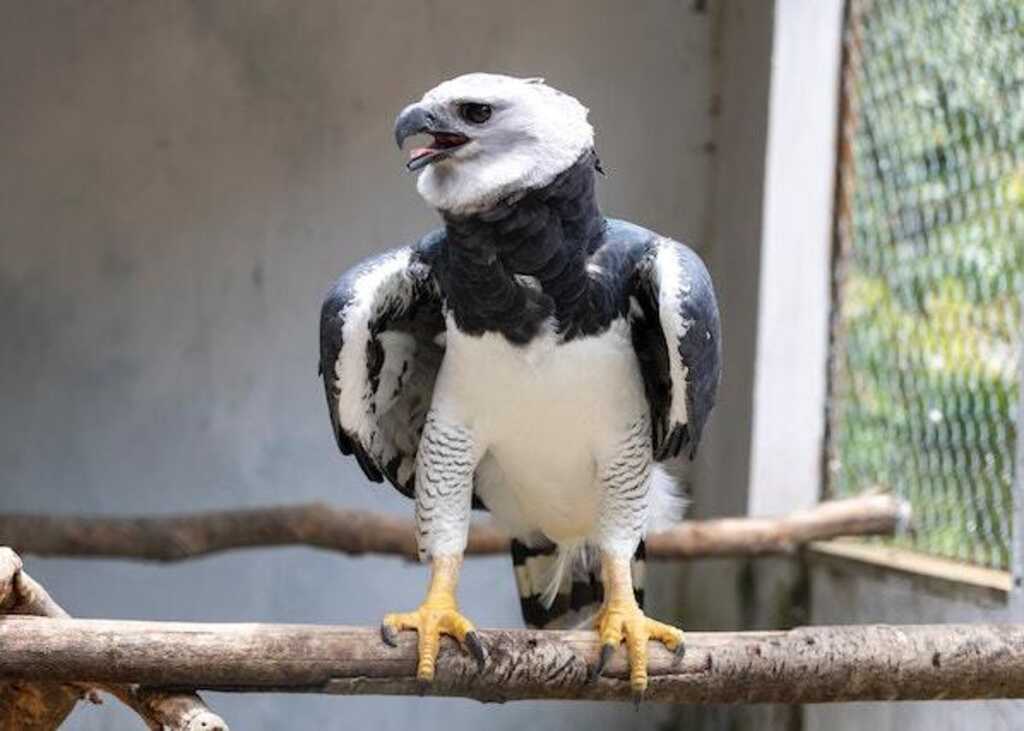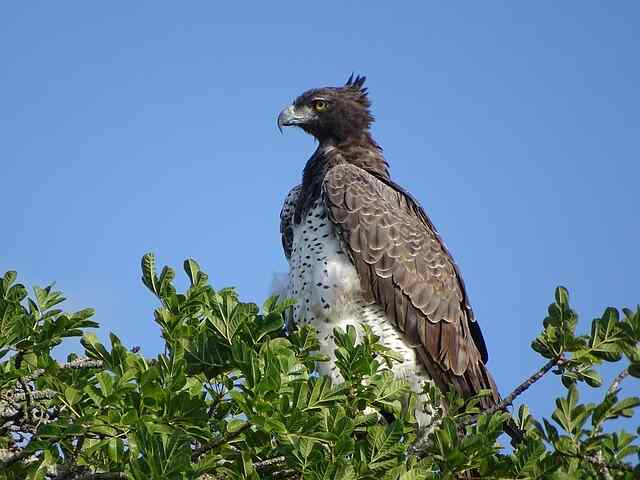As majestic creatures soaring through the vast skies, eagles captivate our imagination and stir our sense of freedom. One intriguing aspect of these iconic raptors is their maturation process.
In this article, titled “When Do Eagles Mature?”, we embark on an exploration to understand when eagles mature.
We’ll shed light on the physical, behavioral, and territorial changes that occur during their development.
By delving into flight and hunting skills acquisition and the establishment of territorial behavior, we aim to gain a comprehensive understanding of their growth.
Additionally, we’ll investigate the various factors influencing the timing of maturity, including environmental, genetic, and ecological aspects.
Our scientific journey unravels the mysteries of eagle development, providing valuable insights for conservation and research efforts.
Table of Contents
- 1 Key Takeaways
- 2 When Do Eagles Mature
- 3 Overview of Eagle Life Cycle
- 4 Physical Changes During Maturation
- 5 Development of Flight Skills
- 6 Acquisition of Hunting Techniques
- 7 Establishment of Territorial Behavior
- 8 Mating and Reproduction
- 9 Formation of Social Hierarchies
- 10 Behavioral Changes as Eagles Mature
- 11 Differences in Maturity Between Species
- 12 Factors Influencing the Timing of Maturity
- 13 Implications for Conservation and Research
- 14 Frequently Asked Questions
- 14.1 How do eagles establish their territorial behavior?
- 14.2 What are the differences in maturity between different species of eagles?
- 14.3 What factors influence the timing of maturity in eagles?
- 14.4 How do eagles acquire their hunting techniques?
- 14.5 Do eagles undergo any physical changes during maturation?
- 15 Author
Key Takeaways
- Eagles undergo physical, behavioral, and territorial maturation.
- Parental care and nest-building activities are essential for eagle maturation.
- Eagles develop flight skills, hunting techniques, and territorial behavior.
- The timing of maturity in eagles can vary among species and is influenced by environmental conditions and competition for resources.
When Do Eagles Mature
Eagles reach maturity at different ages, depending on their species. Generally, most eagles attain sexual maturity and full adulthood between 4 and 6 years of age.
However, larger species may take longer, with some, like the Bald Eagle, reaching maturity around 5 years.
During this time, they acquire their adult plumage and breeding capabilities, becoming fully independent and ready for reproduction.
Overview of Eagle Life Cycle
The life cycle of eagles encompasses various stages of development, including maturation, which is the focus of this overview.
Eagle nesting habits play a crucial role in the maturation process. Eagles typically construct their nests in tall trees or on cliffs, providing a safe environment for their offspring.
Parental care is an essential aspect of eagle maturation. Both male and female eagles actively participate in nest building, incubation, and feeding their young.
This parental involvement ensures that the eaglets receive the necessary care and attention for their growth and development.
As eagles mature, they undergo significant physical changes, including feather development, increased muscle mass, and the growth of their beaks and talons.
These changes prepare them for their transition into adulthood, enabling them to become skilled hunters and survive in their natural habitat.
Physical Changes During Maturation
During the maturation process of eagles, significant physical changes occur, such as the development of their powerful wingspan, which can reach an impressive span of up to 7 feet.
As eagles enter their growth spurt, their wings grow rapidly, allowing them to acquire the necessary strength and size for flight.
Feathers also undergo changes, becoming stronger and more resilient, enabling eagles to withstand the forces of wind during soaring and hunting.
Additionally, their beaks and talons develop and harden, providing the necessary tools for capturing and feeding on prey.
These physical changes are crucial for eagles to successfully navigate their environment and ensure their survival.
Moving forward into the subsequent section about the development of flight skills, eagles undergo further transformations to hone their abilities and become proficient in flight.
Development of Flight Skills
As eagles mature and their physical changes take place, they undergo a transformative process that allows them to develop their flight skills and become adept at navigating their environment.
One crucial aspect of this development is the development of their wing muscles.
As eagles grow, their wing muscles become stronger and more developed, enabling them to generate the power needed for flight.
This improvement in wing muscles allows them to maneuver through the air with great agility and control.
Additionally, eagles also improve their aerial navigation skills during maturation. They learn to read air currents, adjust their wing positions, and make precise movements to soar effortlessly through the sky.
These skills play a vital role in their ability to locate prey and establish territories.
The acquisition of hunting techniques will be discussed in the subsequent section, highlighting the seamless transition from the development of flight skills to the mastery of hunting techniques.
Acquisition of Hunting Techniques
Throughout their development, eagles undergo a transformative process that allows them to acquire the necessary hunting techniques and become skilled predators.
The acquisition of prey and adaptation to the environment play a crucial role in this process.
As eagles mature, they develop a keen sense of vision, which enables them to spot potential prey from great distances.
They also develop strong and agile wings, allowing them to maneuver swiftly and silently through the air.
In addition, their powerful talons and sharp beaks are perfectly adapted for capturing and subduing their prey.
Through trial and error, young eagles learn various hunting techniques, such as soaring, stooping, and diving, to effectively catch their prey.
As they master these techniques, eagles become more proficient hunters, ensuring their survival in the wild.
This development of hunting skills sets the stage for the subsequent section on the establishment of territorial behavior.
Establishment of Territorial Behavior
The establishment of territorial behavior in eagles involves the selection and defense of a specific area where they can hunt and nest.
Eagles establish breeding territories to ensure a steady supply of resources necessary for their survival and reproduction.
The selection of a suitable territory is crucial, as it provides access to abundant prey and appropriate nesting sites.
Competition for resources, such as food and nesting sites, plays a significant role in the establishment of these territories.
Eagles will fiercely defend their chosen territory against intruders of their own species, engaging in aerial displays and vocalizations to assert their dominance.
This territorial behavior ensures that eagles have exclusive access to the resources they need for successful mating and reproduction.
Transitioning into the subsequent section about ‘mating and reproduction,’ eagles rely on their established territories to attract mates and raise their offspring.
Mating and Reproduction
Mating and reproduction in eagles involve a complex and highly strategic process, essential for the continuation of their species.
Eagles exhibit a range of mating behaviors and reproductive strategies that ensure successful reproduction.
Courtship rituals, such as aerial displays and vocalizations, are common mating behaviors observed in eagles. These behaviors serve to attract potential mates and establish pair bonds.
Once a pair bond is formed, eagles engage in nest-building activities, which can take several weeks to complete.
Female eagles typically lay one to three eggs, which are incubated by both parents. After hatching, the parents provide care and protection for the eaglets until they fledge.
Mating and reproduction in eagles are crucial for the survival and growth of their population.
Transitioning into the subsequent section about the formation of social hierarchies, eagles’ successful reproduction contributes to the establishment of stable family units and the development of their social structure.
Formation of Social Hierarchies
Formation of social hierarchies in eagles involves a hierarchical organization within their population, characterized by the establishment of dominant individuals and subordinate individuals.
This formation of social bonds is crucial for the survival and reproductive success of eagles.
Communication within eagle hierarchies plays a vital role in maintaining social order and resolving conflicts.
Eagles use a variety of visual displays, calls, and body postures to convey their dominance or submission. The formation of these hierarchies is often determined by age, size, and experience.
Dominant individuals typically have access to better resources such as nesting sites and food, while subordinate individuals may be excluded or have limited access to these resources.
As eagles mature, their position within the social hierarchy may change, leading to behavioral changes and new challenges.
Transitioning into the subsequent section about ‘behavioral changes as eagles mature’, eagles undergo significant transformations as they reach maturity, which impact their behavior and interactions within the social hierarchy.
Behavioral Changes as Eagles Mature
As eagles progress through their life stages, they undergo significant transformations that shape their behavior and influence their interactions within the social hierarchy.
One of the notable changes that occur as eagles mature is their feeding habits.
Juvenile eagles primarily rely on their parents to provide food, but as they mature, they gradually become more independent and start hunting on their own.
This shift in feeding habits allows them to develop the necessary skills for survival and establish their place within the social hierarchy.
Furthermore, as eagles reach maturity, they also experience changes in their social interactions. They become more assertive in defending their territories and engaging in courtship behaviors.
These behavioral changes are crucial for establishing dominance and attracting mates.
Understanding these transformations in feeding habits and social interactions provides valuable insights into the development of eagles as they mature.
Transitioning into the subsequent section about differences in maturity between species, it is important to explore how these changes vary among different types of eagles.
Differences in Maturity Between Species
Differences in maturity between various species of eagles can be observed through the distinct patterns in their feeding habits and social interactions as they progress through their life stages.
These differences in behavior have a significant impact on population dynamics.
For example, some species of eagles reach sexual maturity earlier than others, leading to variations in breeding patterns and population growth rates.
Additionally, the timing of when eagles become independent from their parents can vary among species, affecting the overall population structure.
To illustrate these differences, the following table highlights the average age at which different species of eagles reach sexual maturity and become independent.
Understanding these variations in maturity is crucial for conservation efforts and managing eagle populations effectively.
Moving on to the next section, factors influencing the timing of maturity will be discussed.
Factors Influencing the Timing of Maturity
Differences in maturity between eagle species can be attributed to several factors. One of the key factors influencing the timing of maturity in eagles is environmental conditions.
Environmental conditions such as food availability, habitat quality, and competition for resources can all play a role in determining when eagles reach maturity.
For example, eagles living in areas with abundant food resources and suitable nesting sites may mature at a faster rate compared to those in less favorable environments.
Additionally, competition from other individuals within the population can also influence the timing of maturity.
Overall, understanding the factors that influence the timing of maturity in eagles is crucial for conservation efforts and research.
This knowledge can help identify populations that may be at risk and inform conservation strategies to ensure the long-term survival of these magnificent birds.
Transitioning into the subsequent section about the implications for conservation and research, these factors highlight the importance of studying and protecting eagle populations.
Implications for Conservation and Research
The findings regarding the factors influencing the timing of maturity in eagles have significant implications for the conservation and research of these majestic birds.
Understanding when eagles reach maturity is crucial for developing effective conservation strategies.
Research findings have shown that the timing of maturity in eagles can vary depending on various factors such as species, habitat, and food availability.
For example, some eagle species may reach maturity earlier in areas where there is an abundance of prey, while others may take longer in areas with limited food resources.
This information can help conservationists identify areas where eagles may be at risk due to delayed maturity, allowing for targeted conservation efforts.
Additionally, research on the timing of maturity can provide insights into the overall health and reproductive success of eagle populations, aiding in the development of conservation plans and management strategies.
Overall, these research findings contribute to our understanding of eagles’ life history and support conservation efforts aimed at protecting these magnificent birds.
Frequently Asked Questions
How do eagles establish their territorial behavior?
Territorial aggression in eagles is established through nest building behavior. Eagles construct intricate nests in high locations, defending them fiercely against intruders. This territorial behavior ensures freedom and security for the eagles and their offspring.
What are the differences in maturity between different species of eagles?
Different species of eagles exhibit distinct maturity behaviors in terms of their behavioral patterns. The environment plays a crucial role in influencing the maturity process in various eagle species, highlighting the ecological impact on their development.
What factors influence the timing of maturity in eagles?
Factors such as genetics, diet, environment, and social interactions influence the timing of maturity in eagles. Understanding these factors is crucial for comprehending the complex process of eagle development and the variation in maturity timing among different species.
How do eagles acquire their hunting techniques?
Eagles develop their unique hunting techniques through a learning process that involves observation, practice, and experience. They acquire their hunting skills by watching adult eagles, imitating their behaviors, and gradually refining their techniques through trial and error.
Do eagles undergo any physical changes during maturation?
During the growth process, eagles undergo various physical changes. These changes include the development of adult plumage, increase in body size and strength, and the maturation of their reproductive organs.







